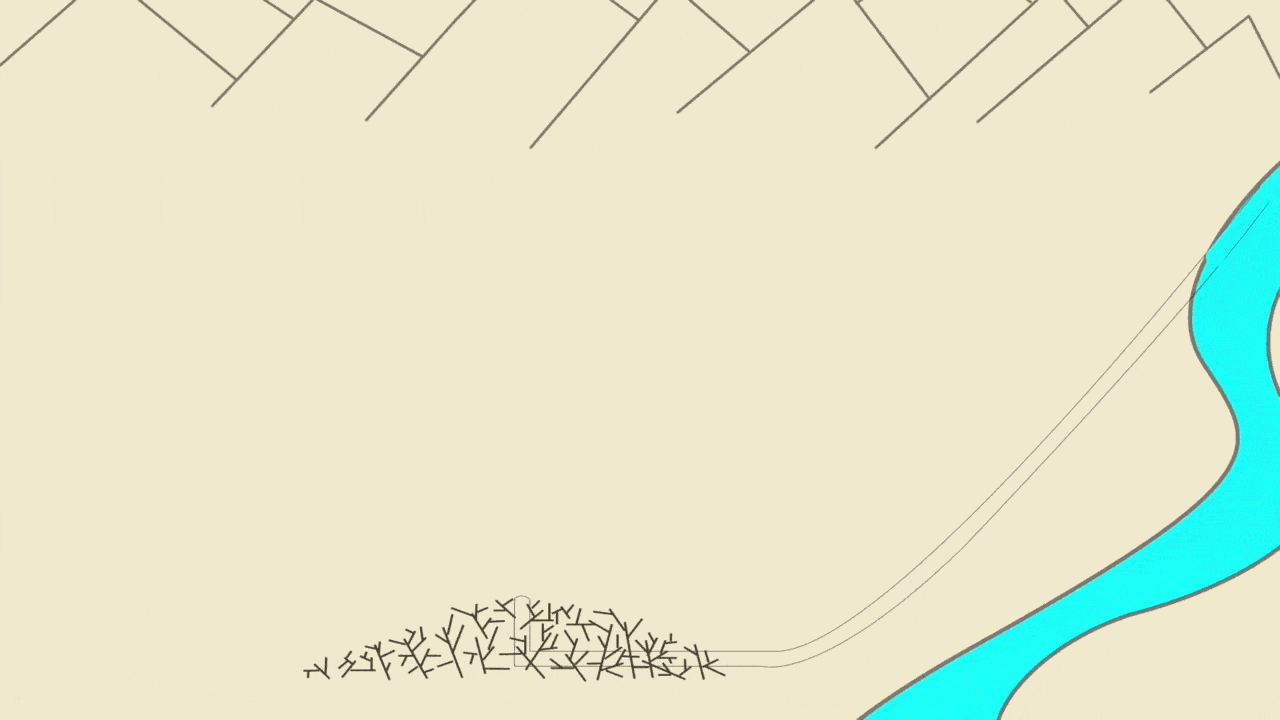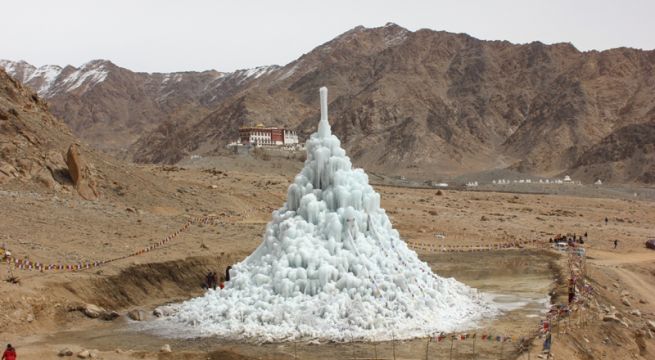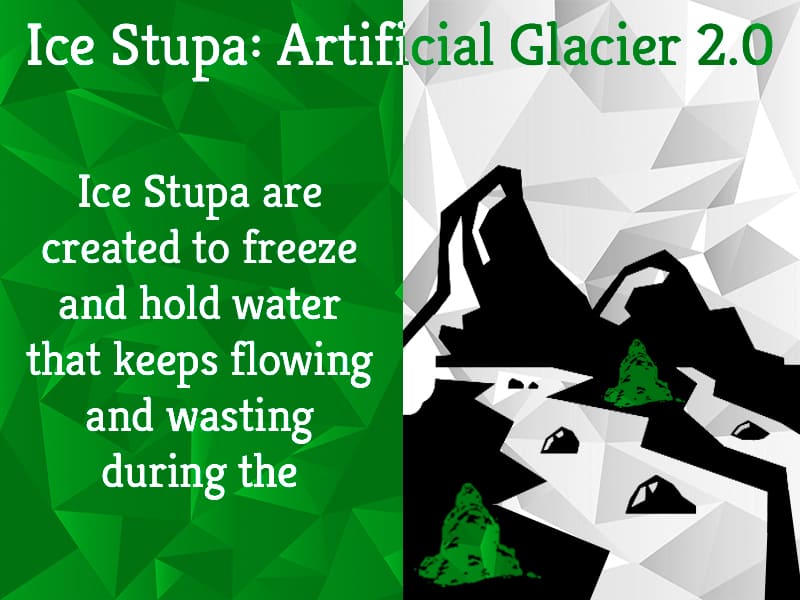The Ice Stupa Project (Artificial Glaciers) is an innovative way to manage water shortage crisis in Northern India.
Just like most places in India, these villages also face acute water crisis. On one hand they observe acute water shortage in the months of April and May, on the other they have excess water or flash flooding by mid June due to the fast melting snow-caps and glaciers. This makes farming activities extremely difficult, leaving most villagers to compete to water their newly planted crops. By the time September kicks in, farming activities come to end with small stream of water flowing throughout winter going into the Indus river without being of any use to anybody.
This water crisis in Ladakh is getting worse with the increase in local pollution and global warming.
In efforts to counter this water crisis, Chewang Norphel (also known as the Iceman of India) devised a simple idea that stored melting water from the glaciers and freeze it into an artificial glacier rather than let it run in to the river which would have dried out. This artificial glacier would then melt during the spring period providing water to the villagers at the right time.
However there are some limitations to these Artificial Glaciers, namely:
- They need very high altitude locations (above 4000m)
- Constant Maintenance
- North Facing Valley to shade ice from the spring sun
- Rely on complete Horizontal Ice Formations
To overcome these limitations, Sonam Wangchuk started working on a better approach.This new approach led to the development of the Ice Stupa Project. This project encourages the development of Ice Stupas, a form of artificial glacier. These are formed by freezing the stream of water vertically in the form of huge towers (usually in the form of cones) of 30 to 50m. There are several benefits of these Ice Stupas such as :
- They can be built next to the village (where water is required)
- It requires very little effort and investment
- Slow Melting Rate
 The working principle for making these artificial glaciers under the Ice Stupa Project is very simple. It revolves around the fact that water maintains its level. This means that water piped from 60m upstream, would rise to approximately 60m up from the ground. Once the water flows through the pipe, it would freeze by the time it falls on the ground slowly forms a huge cone or Ice Stupa roughly 30 to 50m high.
The working principle for making these artificial glaciers under the Ice Stupa Project is very simple. It revolves around the fact that water maintains its level. This means that water piped from 60m upstream, would rise to approximately 60m up from the ground. Once the water flows through the pipe, it would freeze by the time it falls on the ground slowly forms a huge cone or Ice Stupa roughly 30 to 50m high.
Practically, the piped water could be allowed to be freeze at ground level following which it could be mounted higher meter by meter as the thickness of ice grows reaching the height of the source.
The goal is to preserve this Ice Stupa till summer so that it as it melts, it feeds the fields. Because these cones extend vertically upwards, they receive fewer of the sun’s rays per the volume of water stored.

The Ice Stupa Project was first put to test in 2013-2014 at the SECMOL Alternative Institute. A spot that was fully exposed to sunlight and located at the lowest altitude (hence warmest) possible in the whole of Leh valley was chosen for the development of the prototype. It took nearly one month to build an Ice Stupa. It was approximately 7m (22 feet) tall and was fed by the campus supply pipe which has its head roughly 15m above the chosen spot.
On May 1st, the Ice Stupa was 3m high and still providing water to the earth around it. It was completely melted on 18th of May. This was proof of concept that bigger masses at much higher altitudes could last well into mid-summer.

